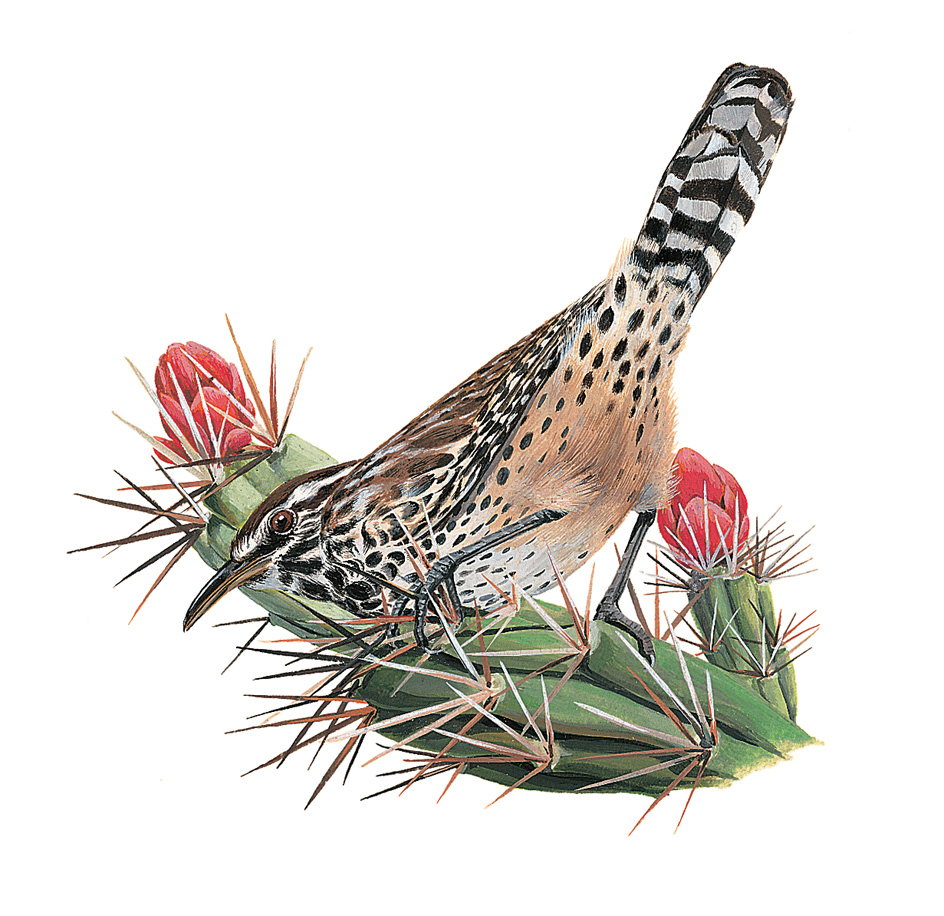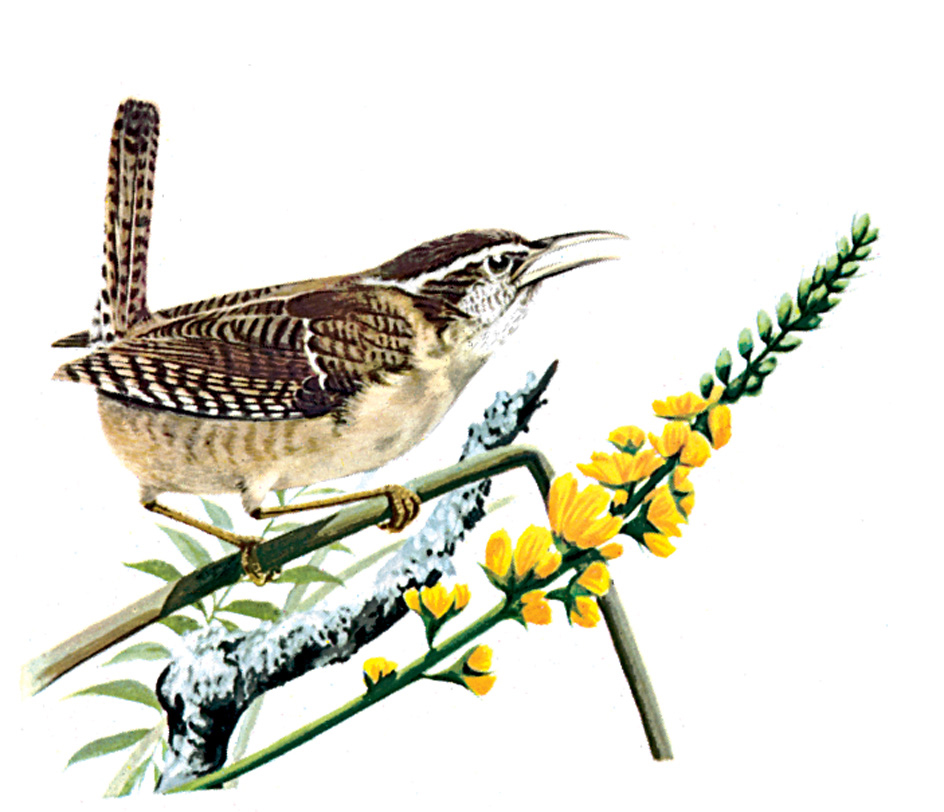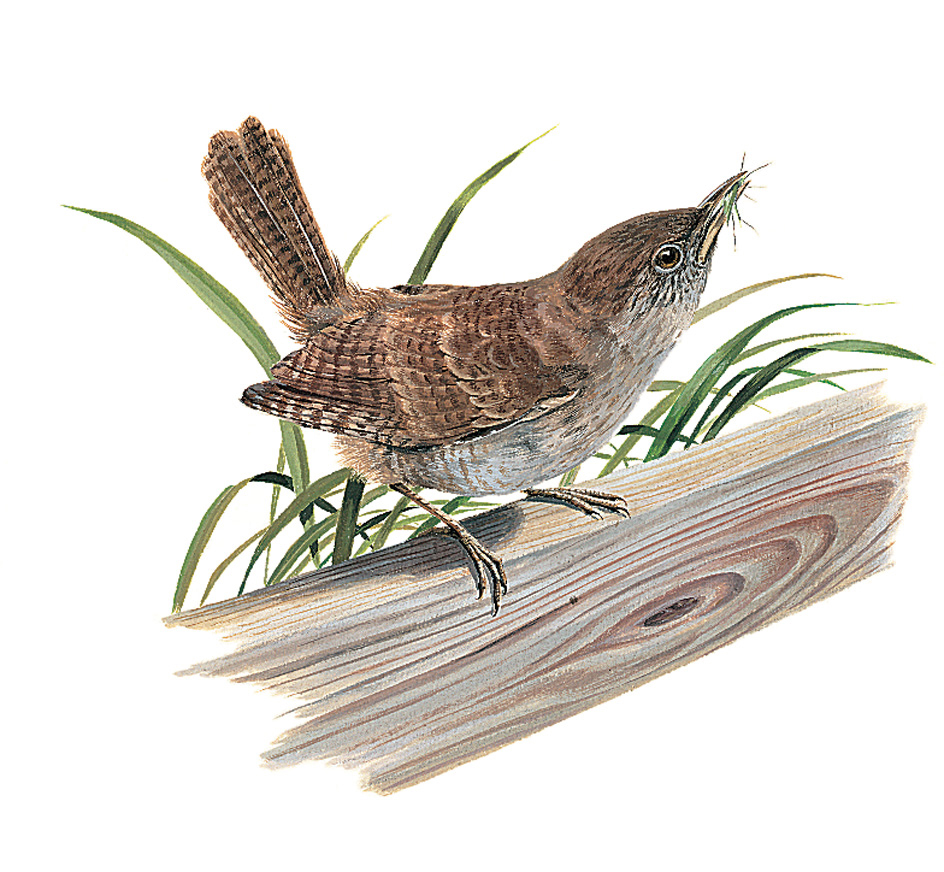Wren is the name of a group of small, energetic birds found in most parts of the world. These birds are extremely protective of their nests. Some wrens are known to enter nearby nests of other birds and pierce the eggs. Wrens eat insects and seeds that they find in underbrush and tangled root growths. They sing melodiously, but can also make harsh, chattering sounds. There are numerous species (kinds) of wrens, most of which live in Asia and the Americas.

Cactus wren
A wren has a slender bill and rounded wings. Most wrens are brown and may be striped, spotted, or streaked with black or white. Wrens have short tails that they often hold upward.
Loading the player...Winter wren
The house wren, commonly known as the jenny wren, is the most familiar wren in North America. It is about 5 inches (13 centimeters) long. It often lives in cities, where many people build birdhouses for it. Gardeners value the house wren because it eats insects. The female house wren lays six to eight eggs a year. The eggs are white and speckled with brownish red.

Carolina wren
The largest wren in North America is the cactus wren, which grows to 81/2 inches (22 centimeters) long. This wren lives in dry regions of the southwestern United States and northern Mexico. Its back, wings, and tail are heavily streaked, and it has a broad stripe over each eye. The rock wren lives in the western section of the United States. It builds its nest under rocks in the dry foothills of the Rocky Mountains. Most rock wrens are gray-brown with cinnamon coloring near the tail. The Carolina wren lives in the southern part of the United States. Its back is rust-brown, and its belly is dull yellow. Most Carolina wrens nest around farm buildings.

Bewick's wren
Other wrens common in the United States are the Bewick’s wren, winter wren, marsh wren, and sedge wren. The Bewick’s wren lives near people’s homes. It has a white-edged tail and white stripes over its eyes. The winter wren nests in the northern United States and in Canada. Its songs echo through evergreen forests in these regions. The marsh wren nests in cattail marshes. The sedge wren prefers grassy marshes and meadows. The marsh wren, which is more common, has a gurgling song. The sedge wren’s song is like the sound made by striking two pebbles together rapidly.
See also Fairy-wren; Rifleman.

House wren
